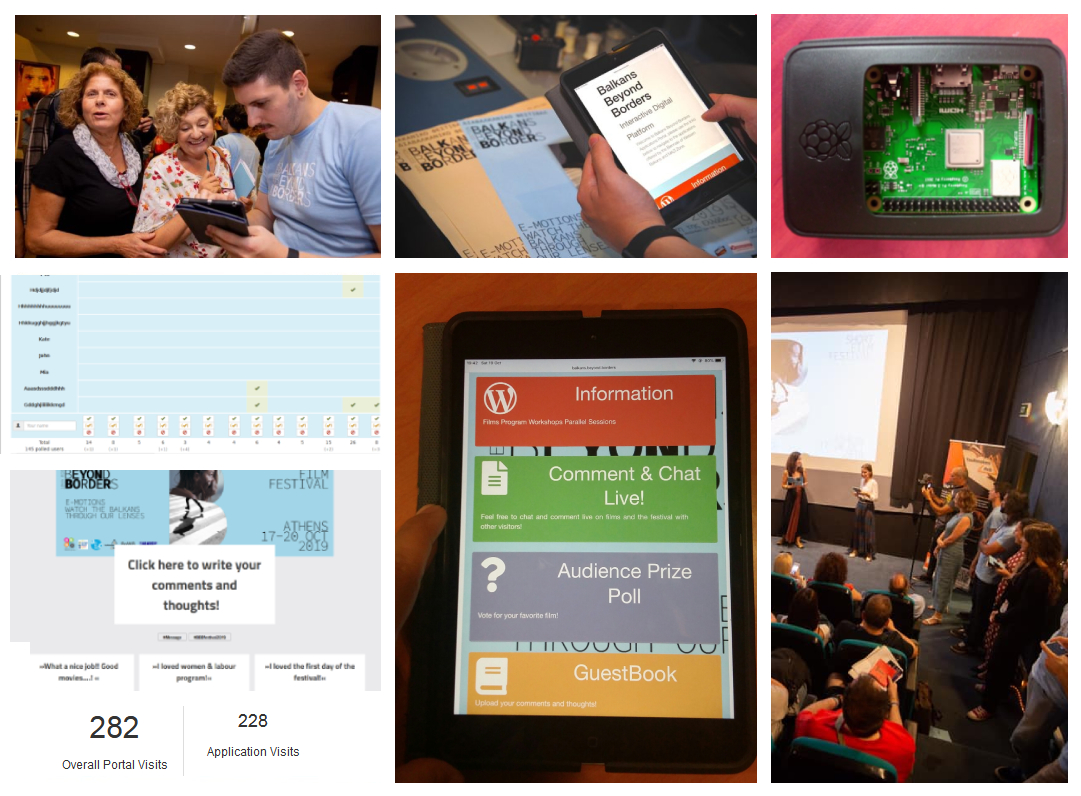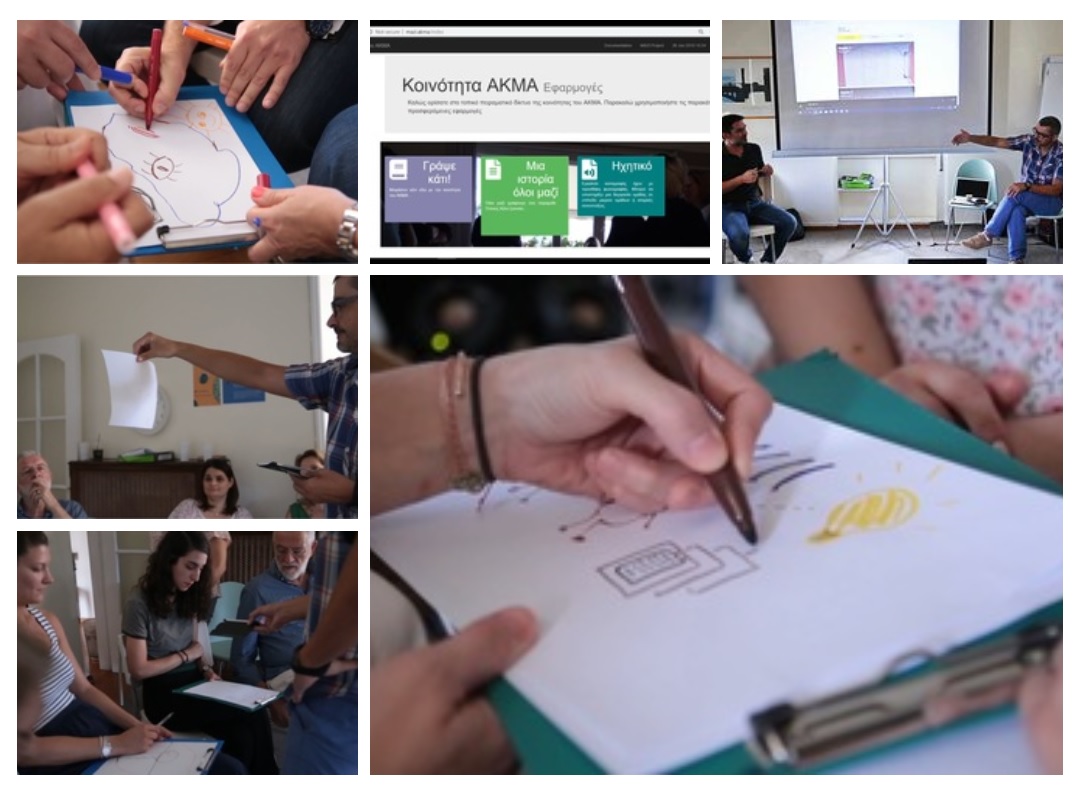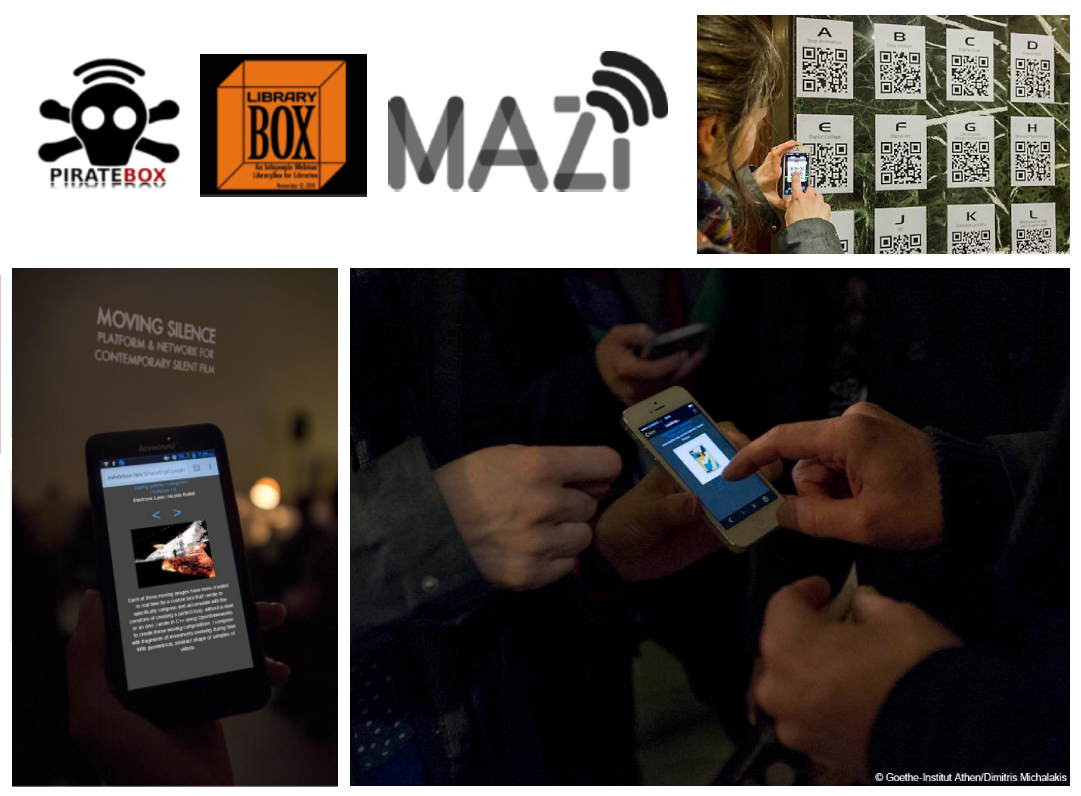1. Abstract
The emergence of Community Networks (CNs) and DIT (Do-It-Together) minimal computing ecosystems has resulted in technological solutions that enhance community connectivity and digital inclusion. The case is made for the cultural uses of local network infrastructures that combine wireless technology, low-cost hardware, and free/libre/open source software (FLOSS) applications. Based on these features, the toolkit MAZI (“together” in Greek), a Horizon 2020 project initiated by NITlab, University of Thessaly, Greece, has been deployed for creating pop-up local wi-fi zones independent from the internet, that enable digital interactions of communities within a low physical proximity coverage range. In this context, the focus is to explore the cultural-technological intersectionality of local community networks and its affordances as useful infrastructures for enhanced cultural event planning, humanities research and curatorial practices.
The objectives of ICT-enabled local networking as a research, curatorial and communication tool within the scope of humanities, digital scholarship and the GLAM sector, can be directed to foster new participatory curatorial forms, the digital documentation of transient -off the internet- community knowledge sharing and inspiring alternative experiences of the locality and commonality.
The three applied cases presented here are examples of physical proximity community networking platforms that have adjusted and utilised the open-source applications of the MAZI toolkit (NextCloud, Etherpad, LimeSurvey and Wordpress) in different cultural settings, mounting the toolkit on a low-sized hardware with minimal computing capabilities (Raspberry Pi):
 i. Media exchange, audience communication and voting in a cross-cultural Balkan event
i. Media exchange, audience communication and voting in a cross-cultural Balkan event
The toolkit was used for enhancing audience engagement during a multifaceted short film festival in the Balkan region. A platform was developed for sharing images, comments, chatting with local community members and enabling a voting system where individual preferences could be expressed. MAZI operated as a hands-on tool for building a participatory digital infrastructure for cultural event organisation, particularly suitable for outdoors or out of internet range areas.
 ii. Collaborative commenting and anonymous participation in community-based fieldwork research
ii. Collaborative commenting and anonymous participation in community-based fieldwork research
During community-based research, we employed an array of participatory techniques that elicit multimodal qualitative data: collective drawing, collaborative creative writing, reflective blogging, storytelling. Protecting anonymity, ensuring privacy and ethical data recording was a critical part of the research project. We employed the build-in anonymity features of MAZI that allow users to connect and share without registering their identities (by default). In this setting, MAZI beared the potential to transform a group of people into a convivial, spontaneous and creative research community, producing critical and ready to analyze empirical data.
 iii. Digital exhibition hosting and community-based curation with added content
iii. Digital exhibition hosting and community-based curation with added content
Digital exhibitions in HTML format built from scratch, hosted in a variety of open-source local networking infrastructures (Piratebox, Librarybox, MAZIzone). The exhibitions could be accessed only locally, on-site, traveling along the venues. The audience could explore the exhibition by connecting to the local network (no internet access) through their personal devices, with the option to upload their own content, collectively curating and contextualising the exhibition. The use case of MAZI here was utilising wireless local networks as exploratory digital curatorial tools.
Bibliography:
Antoniadis, P. (2016). Local networks for local interactions: Four reasons why
and a way forward. First Monday, 21(12). doi:10.5210/fm.v21i12.7123
Davis, G. Gaved, M. (2017). Seeking togetherness: moving toward a
comparative evaluation framework in an interdisciplinary DIY networking
project. In: Proceedings of the 8th International Conference on Communities
and Technologies (C&T ’17), Association for Computing Machinery, pp.
96–99.
Dragona, D. (2015). “From Community Networks to Off-the-Cloud Toolkits”, in I. Theona and D. Charitos (eds.) Hybrid City Conference III: Data to the People. Athens: URIAC
GO:DH Minimal Computing working group. “Minimal Computing” Retrieved from https://go-dh.github.io/mincomp/thoughts/2016/10/02/minimal-definitions
Gurstein, M. 2007. What is community informatics (and why does it matter)? Polimetrica, Milan, Italy.